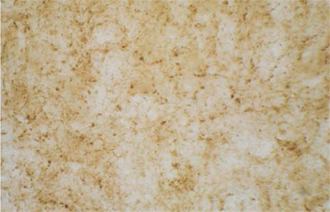Product Details
| Alternative Name: | GAD |
| |
| Host: | Rabbit |
| |
| Immunogen: | Synthetic peptide corresponding to aa 572-585 (D572FLIEEIERLGQDL585) of rat glutamate decarboxylase (GAD65). This sequence is conserved in rat GAD67 and in human GAD-2. |
| |
| UniProt ID: | Q05683 |
| |
| Source: | Purified from rabbit serum. |
| |
| Species reactivity: | Human, Mouse, Rat
Cat
|
| |
| Applications: | ELISA, IHC, WB
|
| |
| Application Notes: | Detects two isoforms of ~65kDa and ~67 kDa by Western Blot. |
| |
| Blocking Peptide: | For Blocking peptide see Prod. No. BML-GP3009.
|
| |
| Purity Detail: | Protein A-affinity chromatography. |
| |
| Formulation: | Liquid. In PBS containing 0.09% sodium azide. |
| |
| Handling: | Avoid freeze/thaw cycles. |
| |
| Shipping: | Blue Ice |
| |
| Long Term Storage: | -20°C |
| |
| Scientific Background: | Glutamic acid decarboxylase (GAD; E.C. 4.1.1.15) is the enzyme responsible for the conversion of glutamic acid to γ-aminobutyric acid (GABA) - the major inhibitory transmitter in higher brain regions. Two molecular forms of GAD (GAD65 and GAD67) are known from rat, cat, pig and man, and both forms are expressed in the CNS and in pancreatic islet endocrine cells. A recent Western blotting study has identified that the isoforms are regionally distributed in the brains of rats and mice. In rat pancreas, GAD65 and GAD67 appear to be differentially localised, GAD65 primarily in insulin-containing (β) cells and GAD67 in glucagon-containing (A) cells. Evidence from knock-out mice suggests that GABA generated by pancreatic GAD isoforms is not critically involved in normal islet cell development and morphology. However, β-cell-specific GAD expression has been shown to be required for the development of autoimmune diabetes in non-obese diabetic (NOD) mice. |
| |
| Technical Info/Product Notes: | A synthetic peptide with the amino acid sequence: [C]-D-F-L-I-E-E-I-E-R-L-G-Q-D-L was selected from rat glutamate decarboxylase (GAD65; C-terminus residues [Cys]+572-585). This sequence is conserved in rat GAD67 and in human GAD-28. The peptide was conjugated to keyhole limpet hemocyanin via the N-terminal cysteine residue using m-maleimidobenzoic acid N-hydroxysuccinimide. The conjugate was used to immunise New Zealand White rabbits and the resultant antiserum (B4;Z00257) has been extensively characterised by ELISA, Western blot and immunohistochemical techniques. <u>Application data</u> <b>Western blotting</b> Test tissues: Mouse and rat brain. Dilution: 1:1000. Protein size: Doublet on SDS-PAGE at approximately 65/67kDa. <b>Immunohistochemistry</b> Test tissues: Human, cat and rat brain (esp. cerebellum). Fixatives: Several fixative solutions may be used. Aldehyde-combination fixatives (i.e. those containing formaldehyde and glutaraldehyde) usually give satisfactory results. Bouin and Susa fixatives containing 0.1-0.2% glutaraldehyde have been used satisfactorily. Processing: Cryostat and Vibratome®9 sections have been used most commonly. Paraffin wax-embedded tissue has been used successfully. The antiserum has also been used for the ultrastructural detection of GAD using pre-embedding immunocytochemistry. Dilution range: 1:200-1:5000, using overnight incubation and PAP or ABC-peroxidase procedure. |
| |
| Regulatory Status: | RUO - Research Use Only |
| |

Immunohistochemistry analysis: Localization of GABAergic neurones within lamina I of cat dorsal horn using rabbit polyclonal antiserum to glutamic acid decarboxylase (GAD65/67). Photomicrograph courtesy of Dr TFC Batten, Institute for Cardiovascular Research, University of Leeds, UK.

Western blot analysis of Glutamic Acid Decarboxylase pAb: Lane 1: MW Marker, Lane 2: Rat Brain Tissue Extract, Lane 3: Mouse Brain Tissue Extract.
Please mouse over
Product Literature References
Distinct mechanisms of axonal globule formation in mice expressing human wild type α-synuclein or dementia with Lewy bodies-linked P123H β-synuclein: A. Sekigawa, et al.; Mol. Brain
5, 34 (2012),
Abstract;
Full Text
Co-localisation of markers for glycinergic and GABAergic neurones in rat nucleus of the solitary tract: implications for co-transmission: T.F. Batten, et al.; J. Chem. Neuroanat.
40, 160 (2010),
Abstract;
Related Products














